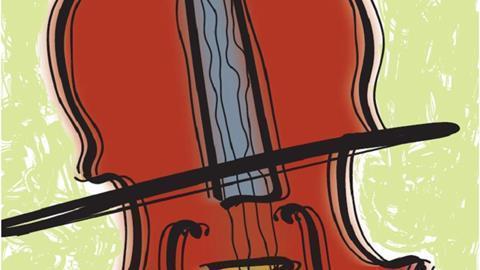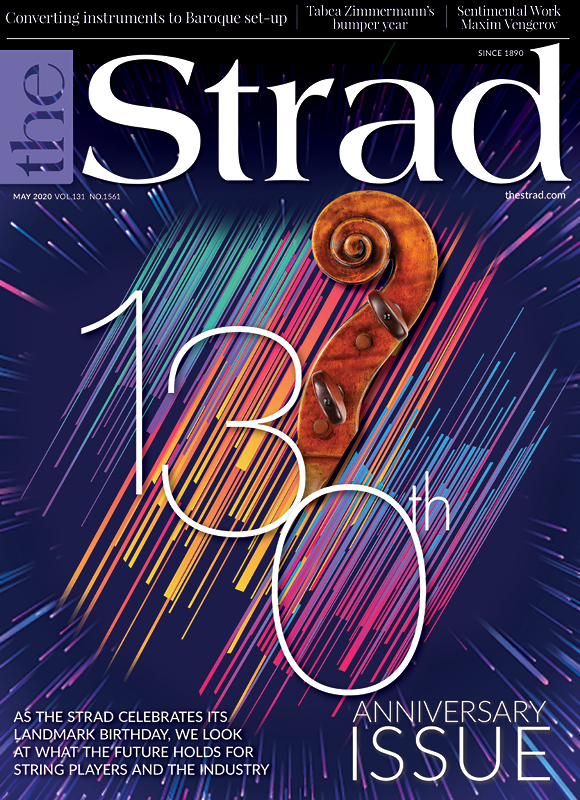Using short bows when teaching beginner string players is a useful practice that should be more widespread, writes cellist Naomi Yandell

For a while now I have favoured using short bows to develop beginner bow holds. I find the cello bows given as standard with smaller-instrument outfits to be outsized, and have built up a stash of short bows to lend out to children until I feel that they are ready to cope with those supplied with their instruments.
Firstly, the standard-length bows are often pretty heavy so that however soft and relaxed a student’s bowing hand is when positioned by the teacher, it soon grabs, clutches and strains in an effort to keep the bow in any way parallel to the bridge. This means that the student is less likely to feel comfortable resting the bow on the string and thereby developing the beginnings of a good sound. It also leads to a tendency for the right shoulder to rise, especially when the student plays higher strings – when the weight of the tip of the bow becomes too much and causes a straightening of the first finger that throws out any sort of balance in the fledgling bow hold.
Secondly, in my view the length of such bows is problematic. Even if a teacher puts a tape three-quarters of the way along the bow to avoid the student going further than the teacher thinks advisable, the student often bows past it in practice sessions without realising. Inevitably, this leads to them twisting their shoulder in an effort get to the end of the bow. Muscle memory is very strong and this can easily lead to problems in the longer term – resulting in pain in the shoulder joint. Also, a bow that is too long can cause problems in keeping the bow parallel to the bridge.
My ideas have encountered some resistance from various quarters, including the owner of my local string shop, who, though accustomed to my ways, approaches the subject with slight (but polite) reservation.
Parents, who quite naturally assume that the bow that comes with the instrument that they have bought must be the correct length and weight, are happy enough to take my advice to begin with – but after a while they may start to suggest that the reason their children are finding aspects of bow distribution tricky may be because they need a longer bow.
Over the past few years I have been strengthened in my conviction on this subject through informal discussions with other teachers. However, it was the reaction of physiotherapist Sarah Upjohn at a recent European String Teachers Association (ESTA) event on ‘The Playing Body’ that finally emboldened me to write this opinion piece. She agreed. But not only that, she approved. As someone on the receiving end of issues developing from the incorrect use of the body in young musicians (Upjohn works at the Purcell School, for the National Children’s Orchestra and for the British Association for Performing Arts Medicine), she has more experience than most of picking up the pieces when things go wrong.
Having been interested by her reaction, I started scrolling through some online conversations to see what others say. It turns out that there is quite a bit on this subject, and by reading the conversations on chat forums I see that these issues don’t just concern young cellists or even young string players. There are many posts from adult beginners who are clearly under the illusion that it is not their bow that’s the problem, but their body. In response, many offers of advice are given that suggest that they keep on trying to change their set-up so that their bow can be accommodated. Luckily, there are others who deliver a more sensible message.
That’s why I feel that it’s important to encourage a fresh look at the ‘standard’ for entry-level instruments before more students encounter injury. After all, we fit the instrument to the player, so why not take the same approach with the bow? As Upjohn said in the ESTA session, we, as teachers, have a duty to safeguard our students by teaching them to use their bodies well.
-
This article was published in the May 2020 130th Anniversary issue
The Strad marks its 130th anniversary with a look at the future of string playing and the violin industry. Explore all the articles in this issue.
More from this issue…
- A look at the future of string playing and the industry
- Violist Tabea Zimmermann on her bumper year
- Converting an instrument to Baroque set-up
- Making a career in music therapy
- How luthiers can avoid repetitive strain injury
Read more playing content here
-












































No comments yet